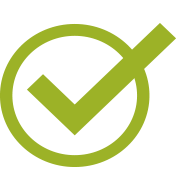Catalog Description
Prerequisite: Completion of FASH 4A with grade of "C" or better
Hours: 108 (27 lecture, 81 laboratory)
Description: Intermediate and advanced techniques of garment construction. Designed for individuals with basic knowledge of sewing principles. Development and improvement of skills in working with designer patterns; techniques of handling specialty fabrics, including knit fabrics; use of sergers. (CSU)
Course Student Learning Outcomes
- CSLO #1: Construct a garment using specialty fabrics and advanced techniques.
- CSLO #2: Create a sample book of advance techniques to include zippers, pockets, collars, and sleeves.
- CSLO #3: Describe the threading and safe use of an overlock machine.
Effective Term
Fall 2025
Course Type
Credit - Degree-applicable
Contact Hours
108
Outside of Class Hours
54
Total Student Learning Hours
162
Course Objectives
Lecture Objectives:
1. Explain the characteristics and threading of the serger;
2. describe the safety features and operation of machines including set-up and storage;
3. differentiate the handling required for each of the different specialty materials;
4. analyze complex designs demonstrating the transfer of skills from technique samples to their application in finished garments;
5. identify techniques used during skills demonstrations, preparing to follow all steps;
6. identify a technique of interest to be researched;
7. describe the qualities of good fit;
8. analyze in writing the information needed to create a cost sheet for each garment; and
9. discriminate quality construction from lower cost construction.
Laboratory Objectives:
1. Model the threading of the serger and test the sewing quality on fabric;
2. demonstrate safe and effective operation of overlock machines;
3. demonstrate ability to work effectively with specialty fabrics in cutting, sewing and finishing;
4. analyze and construct complex designs from commercial patterns with directions given in pattern demonstrating advanced principles of clothing construction;
5. produce sample notebook of techniques including: buttonholes, fly zippers, fasteners and complex pockets, collars and sleeves;
6. create one or more samples and a written summary of a sewing technique based on individual research.
7. alter patterns and fit garments using tissue or muslin fitting for preliminary fitting and fashion fabric for final fitting;
8. generate cost sheets for each garment accounting for materials and labor and calculating the final cost; and
9. compare 3 manufactured garments of different price points identifying the quality of fabric and construction.
General Education Information
- Approved College Associate Degree GE Applicability
- CSU GE Applicability (Recommended-requires CSU approval)
- Cal-GETC Applicability (Recommended - Requires External Approval)
- IGETC Applicability (Recommended-requires CSU/UC approval)
Articulation Information
- CSU Transferable
Methods of Evaluation
- Classroom Discussions
- Example: Students will participate in a discussion topic sharing successful seam finishes for rayon fabric.
- Essay Examinations
- Example: Students respond to questions on a self-evaluation essay exam pertaining to one of the garments made during the semester. Exam questions ask students to discuss why they chose various techniques and how those choices affected the success of their finished garment. Exams are graded based on how thoroughly students answer the questions.
- Problem Solving Examinations
- Example: Students will construct garments using specialty fabrics. In the process of making these fabrics, they will learn to read commercial patterns, compare pattern measurements to their body measurements, make alterations to the patterns and analyze the fitting of the garment, and make further adjustments. Grades and feedback will be given in-person or on the learning management system.
- Projects
- Example: Students complete at least 2 garments demonstrating the advanced skills of using knits, a specialty fabric and/or a designer pattern. Garments are graded based on the overall appearance, appropriateness of design and quality of the sewing techniques used. Grades and feedback are given in class or on the learning management system.
- Skill Demonstrations
- Example: Students complete a samples notebook demonstrating that they can use a sewing machine to complete advanced stitches and techniques. Techniques are graded based upon the accuracy and precision of the sample. Grades and feedback are given in class or on the learning management system.
Repeatable
No
Methods of Instruction
- Laboratory
- Lecture/Discussion
- Distance Learning
Lab:
- The instructor will model to the class how to evaluate the characteristics and requirements of specialty fabrics and will demonstrate the handling of specialty fabric. Students will complete samples demonstrating the handling of specialty fabrics. Feedback on student samples is given in written form on assignments or on the learning management system.
Lecture:
- Instructor will give a lecture on advanced pattern selection and appropriate fitting procedures. Students will describe how they will apply appropriate fitting procedures to the garment that they make during lab.
Distance Learning
- The instructor will provide a lecture video via the learning management system explaining effective seam finishes for different specialty fabrics. Students view the video then take an objective exam via the learning management system to reflect their understanding of the topic.
Typical Out of Class Assignments
Reading Assignments
1. Read the assigned section on sergers before coming to class and be prepared for discussion during the lecture portion of class. 2. Research a sewing technique not covered in class and outline the main steps required for the technique.
Writing, Problem Solving or Performance
1. Construct at least 2 garments: a knit, specialty fabric and/or an intricate garment. 2. Analyze, compare and contrast a chosen garment in three different price ranges as to quality of fabric and construction, price, sizing and target customer.
Other (Term projects, research papers, portfolios, etc.)
1. Reproduce advanced sewing samples to compile a notebook of sample techniques. This book proves proficiency and is a reference for future projects. 2. Display one or more garments constructed during the course of the semester.
Required Materials
- New Complete Guide to Sewing
- Author: Reader's Digest
- Publisher: Reader's Digest
- Publication Date: 2011
- Text Edition:
- Classic Textbook?: Yes
- OER Link:
- OER:
- Professional Sewing Techniques for Designers
- Author: Julie Cole / Sharon Czachor
- Publisher: Fairchild
- Publication Date: 2023
- Text Edition: 3rd
- Classic Textbook?:
- OER Link:
- OER:
Other materials and-or supplies required of students that contribute to the cost of the course.
Students must provide complete kit of sewing equipment acquired in 4A, and fabric and notions for completion of samples and at least 2 garments.


